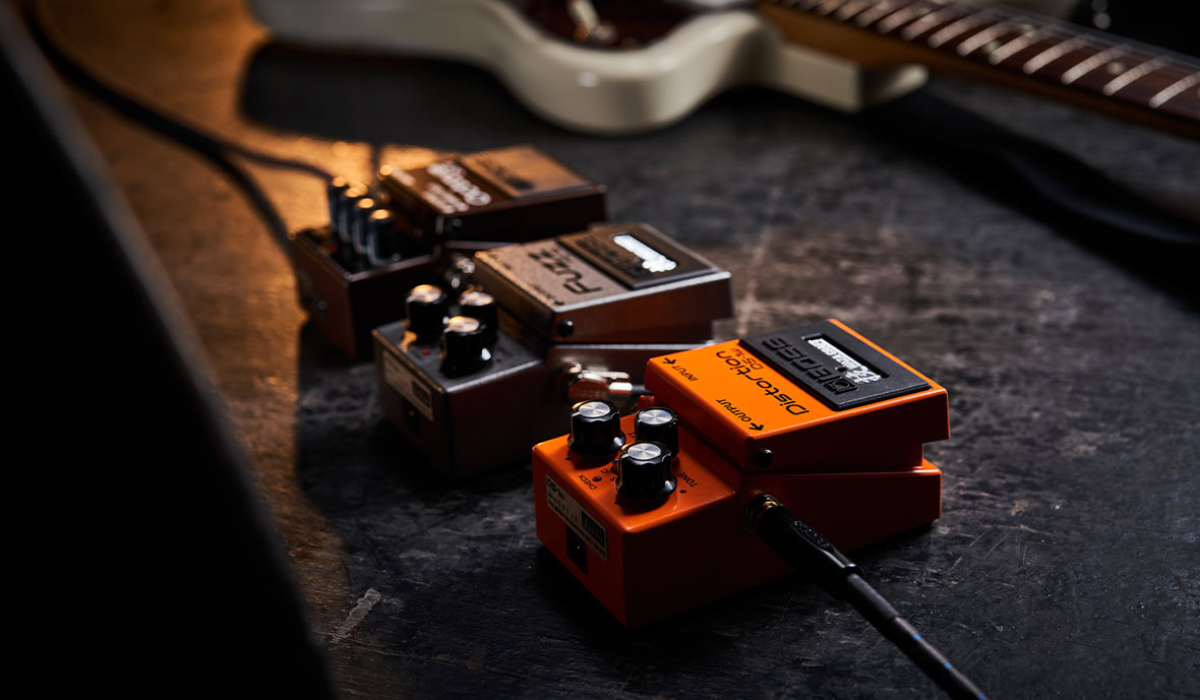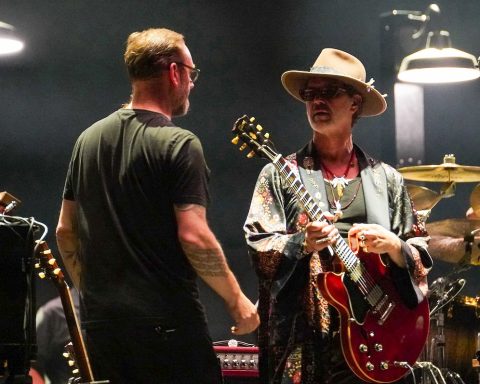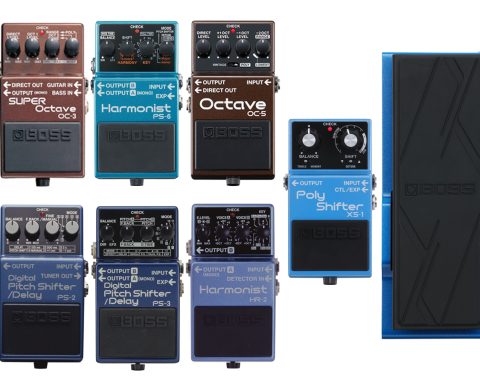A distortion pedal can be a guitar arsenal’s most defining and tone-altering effect. Distortion can be a malleable and versatile tool, whether in place of a second channel on an amplifier or as the backbone of a player’s sound. It partners well with other effects to enhance its capabilities and expand any guitarist’s creative potential.
Pairing Distortion
Distortion sits in the same place as an overdrive in the signal chain. It should be one of the first to receive the guitar’s raw signal, preceded only by a compressor, octave, or some fuzz pedals. A distortion can enhance and define all of the effects that follow it.
Think of it as the base upon which to build other sounds. It’s the bread and butter in this sonic sandwich, while modulation, delay, and reverb provide the filling. When positioned later in the signal path, distortion can muddy any time-based or modulation effects. These should remain as clean and pure as possible to function at their fullest.
PEDAL COMBINATIONS
Overdrive
Stacking a distortion pedal with overdrive is an excellent way to create new, interesting distorted tones. This combination is incredibly potent for players looking to shape a particular, sustained, and harmonically full-bodied tone. For guitarists who favor using their distortion as an always-on effect, stacking an overdrive before or after a distortion pedal can boost crunch for the choruses and solos.
When stacked before distortion, an overdrive will saturate and crank the distorted gain of the pedal. This approach is excellent for thickening tone. Placed after a distortion pedal, an overdrive will boost a signal and modify the overall sound of the effect. Doing this will help a solo cut through a dense mix.
Recommended Pairings
- BOSS DS-1W and BD-2W
- BOSS MT-2W and SD-1W

Noise Suppressor
Let’s face it. Distortion pedals add a lot of gain to a guitarist’s tone. The more one pushes the distortion effect and the pedal level, the louder the noise floor becomes. It also becomes more reactive to the subtlest string noise and emphasizes any resonating harmonics. Partnering a distortion with a noise suppressor is a great way to clean up, preserve, and tighten your guitar tone.
The noise suppressor can be tailored specifically to the distortion it’s working with, so feel free to push the distortion to the limits of its gain structure and EQ-boosting capabilities. The noise suppressor gates any unwanted noise, leaving guitar stabs precise and articulate.
Recommended Pairings
- BOSS HM-2W and NS-2
- BOSS MT-2W and NS-2
"The noise suppressor can be tailored to the distortion, so push the distortion to the limits of its gain structure and EQ-boosting capabilities."
Chorus
Chorus is an excellent effect for thickening your distorted tone. It can enhance and widen the sound with a low or medium gain setting on a distortion pedal. Chorus is perfect for keeping picked melodies present in the mix or offering an alternative tone without altering it entirely.
The guitar solo in Nirvana’s “Come As You Are” is an excellent example of chorus and distortion. Kurt Cobain uses chorus to create an extra push in the music, lifting his solo in the mix with a unique tone and clever blend of the two effects.
Recommended Pairings
- BOSS DS-1W and CE-2W
- BOSS JB-2 and DC-2W
Octave
Octave pedals add a full, fat lower octave to a sound, turning simple licks into funky riffs. When partnered with a distortion pedal, they open up a world of delightful synthy possibilities.
Boosting the sub-octaves on an OC-5 and cutting the dry signal, then running the pedal into something like a DS-1, with the distortion control on a high setting, can turn your guitar into a bass synth. The distortion pedal limits the guitar’s natural dynamics, while the octave shifts its frequencies into synthesizer territory. Both bass players and guitarists can use this trick to access a new range of tones.
Recommended Pairings
- BOSS HM-2W and OC-5
- BOSS DS-1 and OC-5
"The distortion pedal limits the guitar's natural dynamics, while the octave shifts its frequencies into synthesizer territory."
Delay
Distortion is a beautiful tool for transforming a guitar signal into something brutal and aggressive. However, distortion can sometimes sit oddly in the mix or seem overly dry. Delay can help harsher distortion tones sit better in the mix and add character to an otherwise plain lead tone.
With a short delay time and a relatively low repeat, delay can be a subtle, effective partner to distortion. Devin Townsend’s “Greetings” is an excellent example of the two effects working in tandem. Townsend’s tone is harsh and aggressive, but the addition of delay softens his solo, giving the piece a dreamy quality.
Recommended Pairings
- BOSS DS-1W and RE-202
- BOSS MT-2W and DM-2W
Amp Setups
Distortion pedals can hugely impact your overall tone, so it’s important to tailor how you use the effect around your setup. A distortion pedal’s key features are volume, EQ, and gain, think of it in many ways as an amp in a box. The amplifier settings will hugely impact a distortion pedal’s performance and vice versa. As a result, it’s crucial to consider both the amp and the pedal when dialing in a distorted tone.
Expanding Single-channel Amplifiers
A distortion pedal provides a fantastic option for adding the illusion of a second drive channel when using a single-channel amplifier. Do this by keeping the amp as clean as possible and pushing the parameters of the distortion pedal. With the distortion pedal doing the heavy lifting, there will be a stark contrast between the two sounds. This approach gives players an easily accessible drive channel without sacrificing the clean headroom of the amplifier, as might be the case with a lower gain overdrive pedal.
"A distortion pedal provides a fantastic option for adding the illusion of a second drive channel with a single-channel amplifier."
Boosting a Driven Amplifier
Conversely, a distortion pedal can make a tremendous always-on amp exciter. A dirty amp and distortion pedal can achieve fantastic results at a lower gain setting. Use the distortion pedal’s volume control to push the amplifier’s preamp. This will create a thick, harmonically rich overdrive from the amplifier. The EQ controls of the distortion pedal can then be used to boost or cut particular frequencies to carve out a desired driven tone.

A Benchmark Effect
Few pedals can claim to have had as much impact on modern music as the distortion pedal. Their continued popularity is why the BOSS DS-1 has been in production since 1978. Part of the reason for their success is how malleable they are to any situation and how well distortion pairs with a myriad of other effects.
The trick with distortion is to keep trying new things. It can be the foundation of a guitar tone, something to build upon with other effects, amp combinations, and instruments. It’s a benchmark effect—easy to use and capable of forging engaging, unique, and genre-defining tones.






